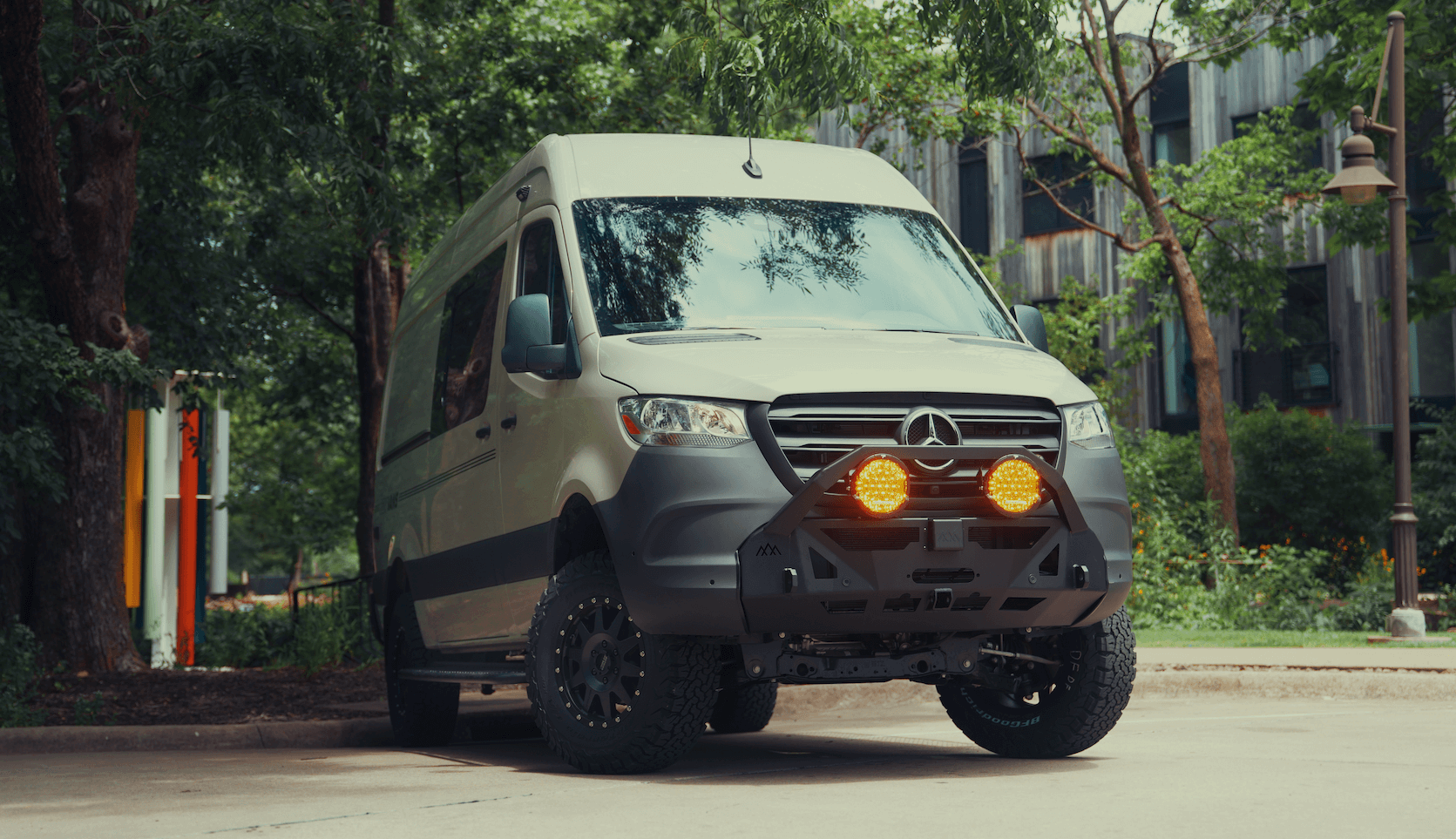Recreational Vans

A rear sway bar is a torsion spring that connects the left and right sides of the suspension. When the vehicle leans in a turn, the bar twists and resists that roll, keeping the body more level. By adding roll stiffness at the rear axle, steering feels sharper and weight transfer becomes more predictable. Drivers notice cleaner lane changes, better stability in crosswinds, and reduced head toss for passengers. On tall vans and loaded tow rigs, this control can make long drives less tiring and more precise.
Picture the bar as a steel beam shaped to mount at the chassis or axle with arms that link to each control arm or axle bracket. When one wheel moves up and the other moves down, the bar twists. That twist stores energy and pushes back against roll. Because both sides are tied together, the bar reduces independent movement and keeps the platform flatter.
Bars influence how much each axle contributes to total roll stiffness. Add too much rear stiffness and the rear can feel lively on corner exit or over bumps mid turn. Too little and the front does most of the work, leading to lazy turn in and excess understeer. The right rear bar stabilizes the body without creating a tail happy feel, especially important on long wheelbase vans and trucks with cargo or tongue weight.
Bar rate grows quickly with diameter. A small change in size can feel like a big jump on the road. Hollow bars can match the stiffness of larger solid bars with less weight, which helps ride quality and unsprung mass. Material quality, arm geometry, and bushing stiffness also matter, so compare more than diameter alone when considering an upgrade.
Start with vehicle use. For daily driving and highway travel, a moderate rear bar paired with quality bushings often delivers the biggest improvement per dollar. If you tow, the added rear roll control helps keep the rig level during crosswinds and when a trailer shifts weight over bumps. For high roof adventure vans, a rear bar can reduce the side lean that makes the cabin feel busy on sweeping turns and freeway ramps.
If you explore rough forest roads, keep articulation in mind. A very stiff rear bar can limit flex and reduce grip on uneven surfaces. Some drivers prefer a mild rear bar and slightly firmer shocks to retain comfort and stability without hurting traction off pavement. Adjustable bars are helpful here, letting you choose a softer hole for travel days and a firmer hole for loaded highway runs.
Bushings and end links are critical. Fresh polyurethane or high quality rubber bushings maintain bar geometry and keep the rate consistent as temperatures change. Upgraded end links can add strength and reduce flex, which makes the bar act as designed. Listen for clunks over small bumps, a sign of worn bushings or loose hardware.
Most rear bars mount with chassis brackets and end links that bolt to control arms or axle tabs. Use correct torque on all hardware, and tighten end links at ride height to avoid preloading the bar. Preload can mimic a cross weight change and cause the vehicle to pull or feel uneven in a straight line. After installation, take a test drive on familiar roads to evaluate turn in, mid corner support, and recovery over bumps.
Alignment is not directly changed by a rear bar, but you may feel a crisper response that reveals other needs like front toe or worn shocks. If your bar is adjustable, start in the middle position. If the rear feels too eager, move to a softer hole. If it still leans more than you want on freeway ramps, try the firmer hole and reassess. The goal is calm body motion without harshness.
Keep the bar clean and periodically check bushing sleeves, brackets, and link ball joints. A light squeak often means a dry bushing that needs compatible grease. If you carry seasonal loads, re evaluate your setting in summer and winter. Small adjustments can keep the van stable across changes in cargo, bikes, gear, or trailer tongue weight.
Rear sway bars are one piece of a matched suspension package. On tall adventure builds and commercial vans, we combine correct bar rate with shocks, springs, and proper tire load ratings to deliver flat, predictable handling without beating you up on broken pavement. Our team tests setups on the same kinds of hills, crosswinds, and mountain passes you drive, then installs with care so the hardware stays quiet and tight over the long haul.
If you want to transform how your van feels on the highway while keeping comfort off pavement, we can recommend the right bar, bushings, and complementary upgrades to match your use and payload. We build around your route, not a catalog list.
Tell us how you drive and what you carry. We will map a suspension plan that keeps your van composed and your trips relaxed.
Explore recreational vans Custom van build process Finance friendly van platformsWant flatter cornering and calmer highway manners from your van or tow rig? Tell us how you drive, and our team will spec and install the right suspension upgrades for balanced, confidence inspiring handling.
ADDRESS:
6159 E Huntsville Rd, Fayetteville, AR 72701
PHONE:
(479) 326-9200
EMAIL:
info@ozkvans.com